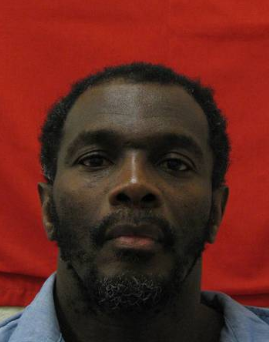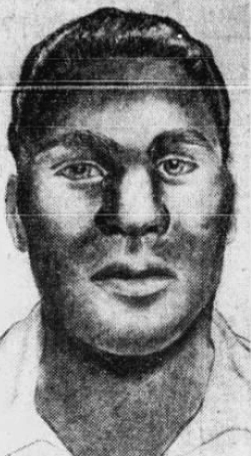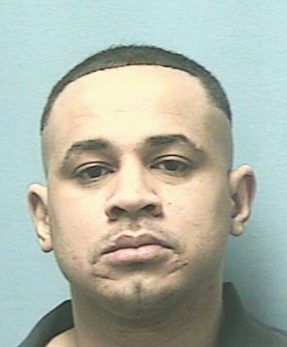Related Research Articles
Henry Louis Wallace, also known as the “Taco Bell Strangler”, is an American serial killer who killed eleven black women in South Carolina and North Carolina from March 1990 to March 1994. He is currently awaiting execution at Central Prison in Raleigh.

The Cincinnati Strangler was the name given to an American serial killer responsible for the murder of seven women in Cincinnati, Ohio, between December 1965 and December 9, 1966. During the investigation, a local resident, Posteal Laskey Jr., was declared the main suspect in the killings and was arrested on December 9, 1966, for one of the murders for which he was subsequently convicted. Although he was never charged with the other murders, the media and police blamed him for the other deaths since according to the official version of the investigators, the murders ceased after his arrest.

John Floyd Thomas Jr. is an American serial killer, serving a life sentence without the possibility of parole for the murders of seven women in the Los Angeles area during the 1970s and 1980s. Police suspect Thomas committed 10 to 15 more murders.

Rodney James Alcala was an American serial killer and sex offender who was sentenced to death in California for five murders committed between 1977 and 1979, receiving an additional sentence of 25 years to life after pleading guilty to two further homicides committed in New York State in 1971 and 1977. While he has been conclusively linked to eight murders, Alcala's true number of victims remains unknown and could be much higher – authorities believe the actual number is as high as 130.

The history of violence against LGBT people in the United States is made up of assaults on gay men, lesbians, bisexuals, and transgender individuals (LGBT), legal responses to such violence, and hate crime statistics in the United States of America. The people who are the targets of such violence are believed to violate heteronormative rules and they are also believed to contravene perceived protocols of gender and sexual roles. People who are perceived to be LGBT may also be targeted for violence. Violence can also occur between couples who are of the same sex, with statistics showing that violence among female same-sex couples is more common than it is among couples of the opposite sex, but male same-sex violence is less common.

Maria Cristina Gutierrez was an American criminal defense attorney based in Baltimore, Maryland, who represented several high-profile defendants in the 1990s. She was the first Latina to be counsel of record in a case before the Supreme Court of the United States. In 2001, Gutierrez was disbarred, with her consent, following multiple complaints from clients who paid her for legal work she failed to perform. At the time, Gutierrez was dying from a combination of multiple sclerosis and diabetes, and her health was rapidly deteriorating.

Harrison Frank "Marty" Graham is an American serial killer who murdered seven women in Philadelphia, Pennsylvania between mid-1986 to mid-1987, keeping their remains in his apartment. In 1988, he was found guilty on all charges and sentenced to death, but his sentences were later commuted to life imprisonment. Graham lived less than a mile and a half away from the home of another murderer, Gary M. Heidnik, who was also arrested during the same time period for similar crimes.

Joseph Roy Metheny was an American serial killer and rapist from the Baltimore, Maryland area. While he claimed to have killed 13 people, sufficient evidence was only found to convict him of two murders. Research later confirmed 3 more victims, through matching his confessions to evidence.

Hubert Geralds Jr. is an American serial killer who murdered five women between 1994 and 1995. He is serving his prison sentence, life without parole, in Menard Correctional Center, which is operated by the Illinois Department of Corrections. During his spree of murders he was known as the Englewood Strangler. Geralds is in custody under the identification number B39967. He was admitted to the Menard Correctional Center on January 16, 1998.
Gerald "Jerry" Walter McFadden, known as The Animal, was an American serial killer and sex offender who was executed in 1999.

Michael Eugene Sumpter was an American serial killer who raped and strangled three women in the Greater Boston area from 1969 to 1973. Because Sumpter died before his DNA was matched to the rapes and murders, he was never tried for or convicted of these crimes.

Charles Anthony Boyd, also known as The Bathroom Slayer, was an American serial killer who raped and murdered three women in North Dallas between 1986 and 1987. He attacked all of his victims in their apartment bathrooms, contributing to his nickname. He was convicted and sentenced to death for one of the murders and was executed by lethal injection in 1999.

Vernon Lee Clark is an American serial killer who sexually assaulted and murdered at least four women in the Baltimore metropolitan area between 1980 and 1989. For his known crimes, he was sentenced to multiple terms of life imprisonment, and remains a suspect in several cold cases.

Nathaniel Burkett was an American serial killer. A native of Picayune, Mississippi, Burkett was convicted of killing his mother by intentionally setting her on fire in 1982, a crime for which he was sentenced to 20 years in prison. He was released early and moved to Las Vegas, where he was convicted of killing a woman he lured behind a church in 2002. In 2012, shortly after being released from prison for that crime, he was linked via DNA to three unsolved murders in Las Vegas, and for these crimes he was sentenced to life in prison in 2018.

Robert Willard Liberty, known as The Candlelight Killer, was an American serial killer who murdered two men in Southern California from March to June 1970 in ritualistic style, and left taunting messages behind for authorities to find. Liberty had spent three years in a mental hospital prior to the murders for killing his girlfriend in 1966. In 1971, while awaiting trial for the new killings, Liberty was murdered by a fellow inmate.

The Bouncing Ball Killer, also known as the Bouncing Ball Slayer, the Bouncing Ball Strangler, and the Rubber Ball Strangler, was a serial killer who is believed to have raped and murdered at least six women between May 1959 and June 1960 in Los Angeles, California. A majority of the victims were elderly and all but one was strangled to death. During the investigation, a multitude of suspects were detained, and although one reportedly confessed to the crimes, no one was ever convicted of the murders, and the identity of the killer remains a mystery.

Robert Franklin Smallwood Jr. is an American serial killer who raped and fatally strangled three women in Lexington, Kentucky, between 1999 and 2006. Until August 2006, the killings were thought to be unrelated, but were linked together through DNA testing. Smallwood was arrested the following month, pleaded guilty to each murder, and was sentenced to life imprisonment in October 2007.

Norman Keith Flowers is an American serial killer who killed three women by beating and strangling them in their Las Vegas apartments from March to May 2005. DNA left at each crime scene eventually linked him to the killings and he was arrested. Flowers was tried in 2008 and convicted, receiving a life sentence without parole. He entered an alford plea for the remaining charges in 2011 and received two more life sentences.

Steven Washington Jr. was an American serial killer who was sentenced to life in prison for the murders of three elderly women in St. Petersburg, Florida. The killings occurred between August and December 1963 when Washington was only 15 years old, which makes him one of the youngest serial killers in history. He died while in prison 2004.
Ronald Hinton is an American serial killer who committed the murders of three women in the Rogers Park neighborhood of Chicago, Illinois, between 1996 and 1999. He pleaded guilty to each murder in 2004 to avoid a death sentence and was subsequently given three life terms.
References
- 1 2 3 "Serial killer, rapist gets life without parole". Associated Press. September 15, 2006. Retrieved September 11, 2022.
- 1 2 3 4 5 6 7 8 9 10 11 Stephen Kiehl (July 16, 2006). "Evidence uncollected, crimes undeterred". The Baltimore Sun . p. 12.
- ↑ "Death of woman in home on Ellamont St. was homicide". The Baltimore Sun . February 23, 1999. Retrieved September 11, 2022.
- ↑ Richard Irwin (December 2, 2002). "Woman, 88, strangled at care facility". The Baltimore Sun . p. 2.
- ↑ Stephen Kiehl (July 16, 2006). "Evidence uncollected, crimes undeterred". The Baltimore Sun . p. 1.
- ↑ "Suspect arrested in deaf man's killing". The Baltimore Sun . September 21, 2005. Retrieved September 11, 2022.
- 1 2 3 Stephen Kiehl (July 16, 2006). "Evidence uncollected, crimes undeterred". The Baltimore Sun . p. 13.
- 1 2 3 4 5 Gus G. Sentementes (December 20, 2005). "Drifter charged in 5 city killings". The Baltimore Sun . p. 15.
- 1 2 3 4 5 Sumathi Reddy, Gus G. Sentementes, Lynn Anderson (December 21, 2005). "Survivor describes struggle for her life". The Baltimore Sun . p. 6.
{{cite web}}: CS1 maint: multiple names: authors list (link) - ↑ Sumathi Reddy, Gus G. Sentementes, Lynn Anderson (December 21, 2005). "Survivor describes struggle for her life". The Baltimore Sun . p. 1.
{{cite web}}: CS1 maint: multiple names: authors list (link) - ↑ "Man guilty of 5 murders, circumvents death penalty". Reno Gazette-Journal . August 12, 2006. Retrieved September 12, 2022.